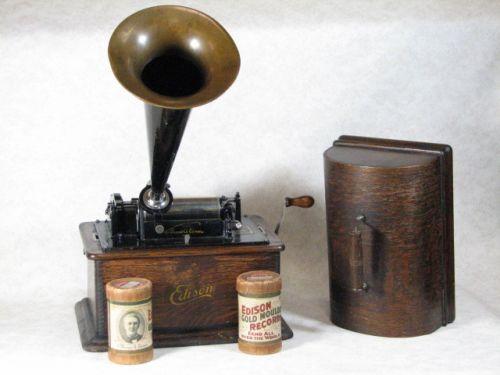
- Edison Phonograph Serial Numbers
- Edison Phonograph Serial Number List Free
- Edison Standard Phonograph Serial Number List
Edison Phonograph Serial Numbers
Edison merged the National Phonograph Company with several of his other companies in 1911 to form Thomas A. Edison, Incorporated. The following year, Thomas A. Edison, Incorporated introduced the Edison Diamond Disc record. Record production continued until 1929, when Edison left the entertainment phonograph business due to declining sales. Edison Standard Phonograph, Serial # S192399,Edison Standard Phonograph, Serial # S192399, green finish oak case with dome lid, front surface stenciled Edison Standard Phonograph, iron bed plate with Edison 'GEM' Model B Phonograph, c. 1900, Edison 'GEM' Model B Phonograph, c. 1900, serial number 243286, oak case with gilt Edison script on.


USA, New Jersey, Orange

1913

Edison Phonograph Serial Number List Free
Thomas A. Edison, Incorporated
Wood, steel, cast iron, brass,; casting, varnishing, colouring, lathing, décalquered
40 x 30 x 34 cm, 11 kg
On the nameplate ”TRADE MARK THOMAS A EDISON”, “Amberola Х manufactured by THOMAS A. EDISON INC at Orange, N.J., U.S.A.”, patent dates, patent restraint and serial number. On the rear lid inner side: ”Edison”. support bar: 'Trade Mark Thomas A. Edison'. On the music box: ”LICENSED FOR USE ONLY ON EDISON PHONOGRAPHS SOLD BY THOMAS A. EDISON INC.”
Edison Standard Phonograph Serial Number List
Phonograph is mounted in light oak wood-varnished case with a high hinged top lid. The lid is fixed in the upper position by a lock pin. Metal repousse lattice covering the horn is on the case front side. Mechanism assembled on a cast chassis coloured with black enamel is on the case top side under the lid. The engine is below; a sound cylinder drive and driving screw-reducing gear, a guide bar with a carriage and playback head are above it. A sound duct with a horn that rotates when the head moves along the cylinder connects the playback head “Diamond model“ with a sound box equipped with a diamond needle and a “floating” weight. The hidden horn is under the chassis. Being in the upper position, the carriage is moved by hand to the beginning of the record. When it is lowered, it is moved by the drive spindle and slides along the support plate in front of the cylinder; the needle is pressed against the cylinder and follows the sound groove. The start lever activates the engine. The crank that is inserted in the aperture on the case right side winds the spring. Phonographs of this type were manufectured in 1913-1914. Music media: cylinder 'Blue Amberol'.